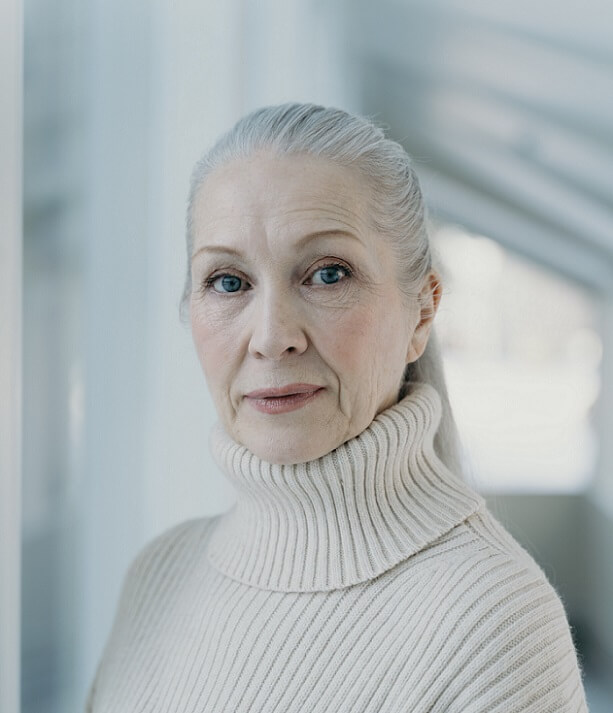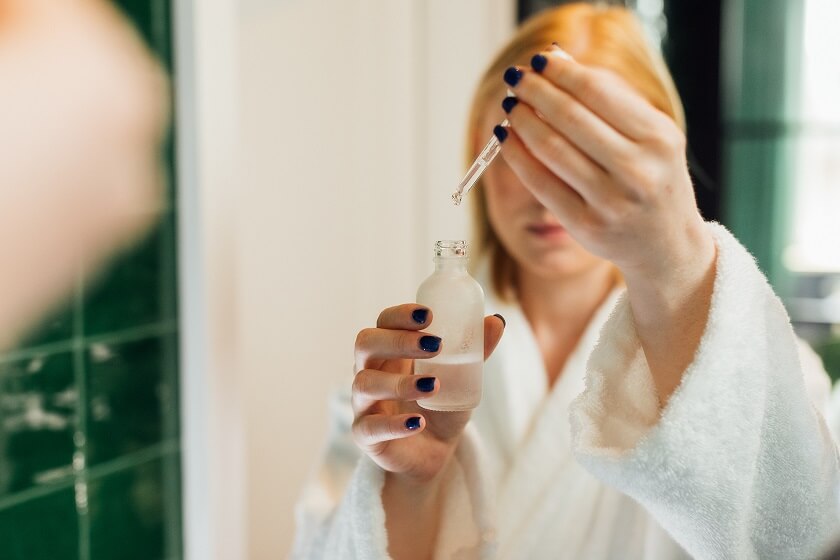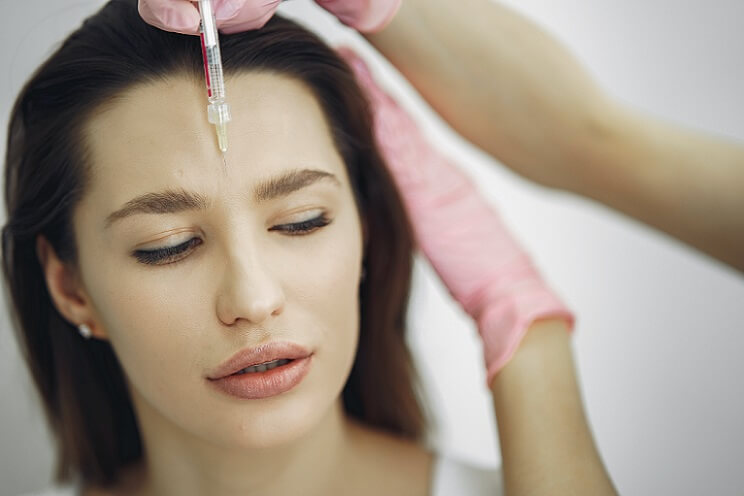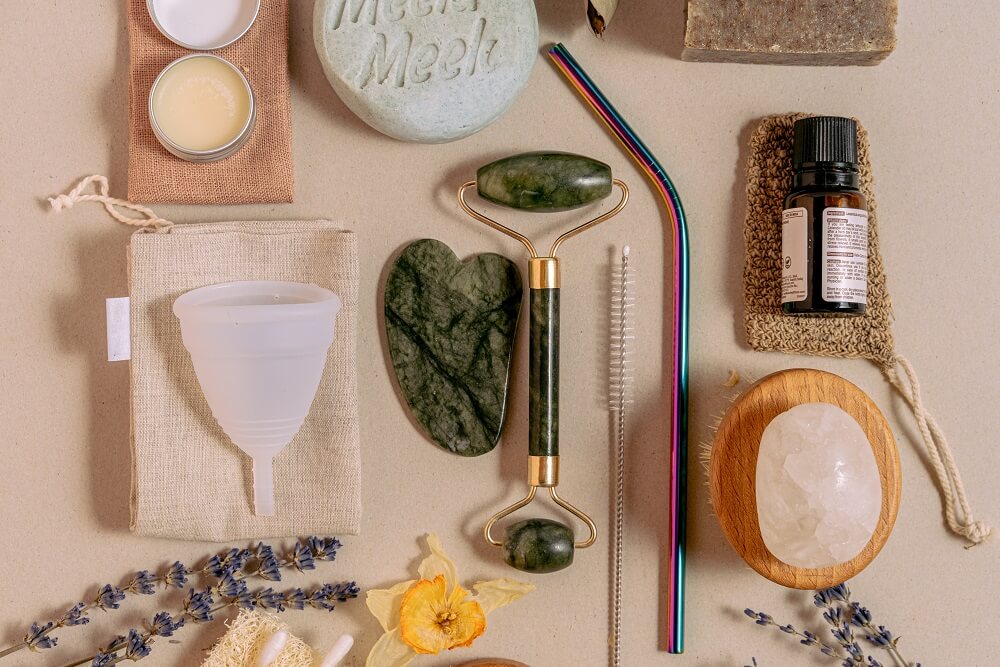If you’re seeking a straightforward guide to preventing premature aging, you’ve come to the right place. While most of us are aware of the importance of using sunscreen to avoid sunburns and protect our skin, there are still a number of other factors that can make our skin age quicker than a raisin in the sun.
We talked to dermatologist Dr. Erum Ilyas to find the difference between the natural and premature aging processes, learn exactly why skin ages prematurely, and discover what we can do to reverse the effects of “accelerated changes” in the skin and hair.
So what exactly is premature aging in comparison to natural aging? Ilyas explained that various factors, such as the environment, nutrition, medications, lifestyle choices, and pollution, accelerate skin and hair aging. Ahead, learn more about the skincare topic that was once considered taboo.
Natural aging
Intrinsic aging describes skin that’s naturally aging due to genetic predispositions, hormonal changes, and the natural aging process. Unlike premature aging, environmental influences don’t directly affect the natural skin aging process.
Over time, there’s a gradual reduction in our skin’s collagen content and elasticity. Less collagen makes our skin appear thinner, while the loss of elasticity creates crepey or tissue paper-like skin wrinkles. This loss of collagen and elastic fibers doesn’t occur at the same rate as when the environment contributes to these changes.
On top of skin changes, people may notice gradual thinning and hair loss during the natural aging process. Increased facial hair can also appear in women.
Premature aging
Extrinsic aging is the term used to describe premature skin aging. Excessive UV exposure, diet, pharmaceutical use, and other environmental factors like pollution are extrinsic factors that damage the skin.
Extrinsic changes to the skin also bring on accelerated loss of collagen and elasticity. As a result, the skin becomes saggy and develops fine lines and wrinkles. In addition, these elements cause lentigines, hyperpigmentation, and chronic redness (which can resemble broken blood vessels on the skin due to excessive skin thinning).
According to Ilyas, distinguishing between these two types of aging can help guide our choices regarding interventions that may help reduce the rapid onset of these changes.
What causes skin and hair to age prematurely?

Since the pandemic, people have turned to social media to discuss the premature changes they noticed in both their skin and hair.
Our lifestyle choices definitely place our skin in jeopardy of premature aging. Excessive sun exposure, smoking, tanning bed use, and even spending hours in front of a computer screen are some key factors that can accelerate skin aging if adequate measures aren’t taken to protect it.
Ilyas informed us that now that we are often on our phones, computers, and other devices, we’re being exposed to solar radiation. “We are increasingly finding that blue light from visible light sources such as energy-efficient light bulbs and electronic devices may contribute to premature aging,” she said.
Ilyas added that poor nutrition also plays a key role in our skin aging sooner than expected. “Adequate hydration with water helps maintain a delicate balance of turgor and helps the skin maintain its function.”
For those of us who take medication for one reason or another, it can also accelerate the aging process. “Prescription medications such as steroids can thin the skin, reduce collagen and elasticity, and make the skin appear to advance in age,” Ilyas shared. “There are blood pressure medications and certain antibiotics that can trigger photosensitivity and make our skin more susceptible to photodamage.”
What causes the natural aging of hair and skin?
Natural aging of hair and skin results from factors that are influenced by genetics and a complex interplay of the skin — the body’s largest organ — with other organ systems, most notably the endocrine system.
With aging, hormonal changes in the body ultimately impact the thickness and quality of hair and skin. Hair tends to thin and become finer in texture on the scalp, while coarse hairs tend to grow along the chin and upper lip. Skin tends to thin, sag, and become drier.
Genetic influences on skin aging may be dictated by the natural photoprotection provided by melanin content. Genetics can also affect the synthesis of key structural elements of the skin, including collagen and elastin, proteins, lipids, and antioxidant mechanisms in cells.
Ilyas explained, “Protein intake supplies the body with the building blocks needed to produce key structural components of the skin. Elements such as copper, zinc, selenium, and iron, as well as vitamins, are essential in helping enzymes in the skin work for their antioxidant abilities.”
Coping with natural aging
Ilyas said she rarely has patients bothered by the natural changes to their skin. However, those who experience extrinsic or premature age-related changes can feel frustrated, as these are somewhat preventable factors.
“Embracing natural age-related changes in our skin and hair can feel empowering once these changes are viewed as earned as a result of experience, wisdom, and time,” she shared. “Hair loss is an exception to this. Thinning or losing hair is a personal experience and has significant psychological and emotional complications, especially for women.”
Coping with premature aging
According to Ilyas, many people have negative attitudes toward their self-image and self-esteem when they experience premature aging. She’s found that those who experience premature aging with their skin can feel frustrated, as these are factors that are somewhat preventable.
With over two decades under her belt, Ilyas believes that cosmetic procedures should be considered restorative, enhancing, or transformative without judgment.
“Most of my patients who seek cosmetic procedures rarely seek to change or alter their appearance to look like someone else,” she claimed, noting most of her clients express frustration that premature aging makes them appear tired and angry.
“Restorative cosmetics focus on restoring the changes we see in our skin. These are patients that come in and say, ‘Where did this line come from?’ or ‘I look tired all the time.’ Most of my patients fall into this category,” she added. “These patients do not tend to have unrealistic expectations and are wonderful to work with because they define beauty as confidence. They define beauty as feeling good in their skin and wanting to look like their best selves.”
Enhancing cosmetic procedures, she explained, involves defining or augmenting a feature. Common examples are the lips, cheeks, and chin. “Facial bones in the cheeks and jaw change over time, and these procedures can play a role in helping restore these contours,” Ilyas said.
Ilyas’s ultimate goal is to help prevent any skin concerns by taking the necessary steps to reduce the need for cosmetic intervention.
Ilyas’s 9 tips for premature aging intervention

- Use UV protection
By their mid-to-late 20s, most people will begin to notice the effects of aging. By damaging the DNA in our cells, UV radiation hastens this process. Sunscreen is the most crucial defense against premature aging. It’s imperative to develop the habit of using sunscreen every day, regardless of the likelihood of exposure to the sun. Instead of chemical sunscreens, pick one with zinc or titanium as an active ingredient.
- Shop for sun-protective clothing
The crepe-like or tissue paper-like wrinkling that can occur in the face can also affect the body. Wearing long sleeves, athletic sleeves, and sun-protective clothing when you’re active can help reduce the sun’s impact on the skin by acting almost like a second skin. Consider shopping for sun-protective clothing to reduce the tendency toward premature aging.
- Add retinol to your nighttime routine
Retinol is a wonderful addition to your evening routine, especially as you enter your 20s. Retinol is a long-term strategy, meaning its results and advantages are realized over time.
With extended use, retinoids are well known for reducing fine lines and wrinkles by increasing collagen formation and skin water retention. They can assist in reversing the effects of sun damage and can help to improve your skin’s shine while lessening skin discoloration.
- Get a dose of vitamin C
More freckles, pigmentation, and discoloration start to appear by the time we reach our 30s. Vitamin C can be added at this point. Topical vitamin C has several beneficial effects, including:
- Being a strong antioxidant that protects cells from UV rays and the environment
- Inhibiting the skin’s tyrosinase enzyme to prevent hyperpigmentation
- Acting as an anti-inflammatory to reduce skin redness
- Increasing collagen production
- Enhancing the overall texture and look of skin
Note: Even though vitamin C can improve pigmentation in the skin, Ilyas finds the best results from pigment due to sun damage.
- Use hyaluronic acid
With age, our skin becomes thinner and less able to retain moisture. Consider adding topical hyaluronic acid (HA) formulations to your skincare routine to combat it. These can be found in skin-hydrating products and anti-wrinkle lotions. When used topically, HA aims to increase skin moisture and suppleness. It also helps reduce the depth of wrinkles.
It’s important to note that when HA is used topically, it doesn’t effectively repair sun damage or slow the aging process over time like other anti-aging ingredients. It also doesn’t penetrate deep enough into the skin to give the effect of an injectable filler.
The goal of applying HA topically is to improve skin hydration and elasticity while decreasing wrinkle depth.
- Look for fillers and toxins

In our 40s, many of us begin to look for alternative possibilities. Toxins and fillers usually represent the next line of defense against deeper lines and wrinkles that are always visible. “I devote more time to assisting my patients in understanding their choices and navigating them by keeping the proper perspective,” Ilyas mentioned.
- Prepare to use peptides
In our 50s, we start to notice a crepey appearance to our skin. This is the result of the skin losing both its suppleness and collagen. Peptides in serums are believed to operate as over-the-counter alternatives by promoting collagen production in the skin.
Peptides are tiny compounds that are thought to activate receptors in the skin and cause the reproduction of collagen. Mixed with the moisturizing benefits of several oils and antioxidants, this skin-nourishing ingredient quickly improves the overall appearance of fine lines and wrinkles. Always apply a moisturizer on top to make it more effective.
- Tighten skin with lasers, radiofrequency skin tightening, or LED light therapy
Let’s discuss the neck. Even when we take exceptionally good care of our faces, the neck begins to stand out and reveal our age. Getting rid of this kind of loose, excess skin can be challenging. Surgery, lasers, LED light treatment, and radiofrequency skin tightening have all proven quite effective in reducing the crepey appearance of the skin.
- Moisturize no matter what
Bruising on the arms and hands is the most prevalent problem among those in their 50s and beyond. “At this age, it is perhaps the new ‘cosmetic’ worry I observe,” Ilyas said.
Due to the potential for simple tearing, it can be unpleasant, unsightly, and challenging to manage.
Ilyas recommended focusing on thicker moisturizers to create more turgor in the skin to help it withstand shearing forces from friction and the minor bumps our skin is exposed to.
Start now with an updated skincare routine
According to Ilyas, the three most essential components of a daily skincare routine are: cleansing, treating or mending, and protecting the skin.
Remember, natural aging of the skin occurs very gradually over time. By managing the skin on a daily basis, you reduce the tendency for extrinsic factors to accelerate these changes.





